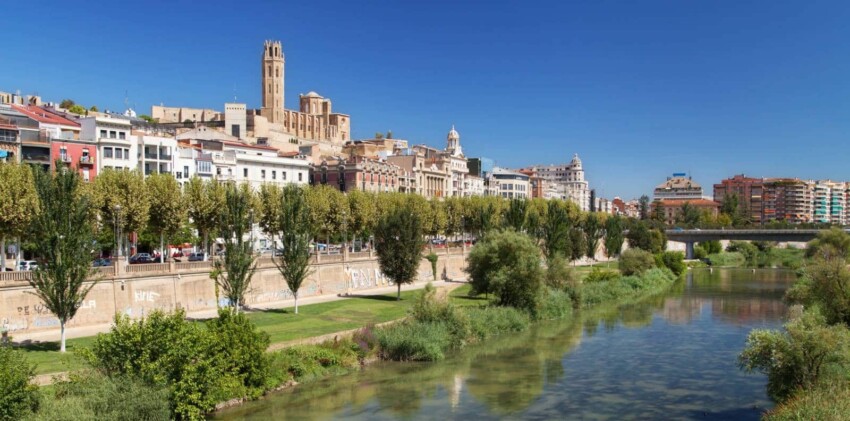

Lleida (or Lérida) is a city in Catalonia located along the Segre river that was founded in the 4th century BC by the Iberians and later conquered by the Romans. The centre of the city stands on a small hill that is the highest point of these territories and has always been the focus of city life. After the fall of the Roman Empire, the city was occupied by the Arabs who gave it the name Larida, from which the name Lleida was derived.
It was not until the beginning of the 12th century that Ramon Berenguer IV was able to reconquer the city and bring it back under the territories ruled by the Crown of Aragon. Over the centuries, the heart of the city has always remained protected at the top of the hill known as Puig del Castell, which was one of the highest points in the area.
Perfect for a trip from Barcelona, Lleida is a town that has managed to preserve its historic centre of ancient origins and several sites of interest that tell much of the history of this beautiful region.
Lleida is a town that can be visited comfortably on foot. The centre is not very big and almost all the main monuments can be reached with a pleasant walk through its narrow streets. Lleida’s landmark monument is the Seu Vella or Old Cathedral, which is located at the top of the hill near the King’s Castle.
Also not to be missed are Piazza de la Paeria, where the Town Hall is located in a 13th century palace, and Carrer Major, one of the main shopping streets.
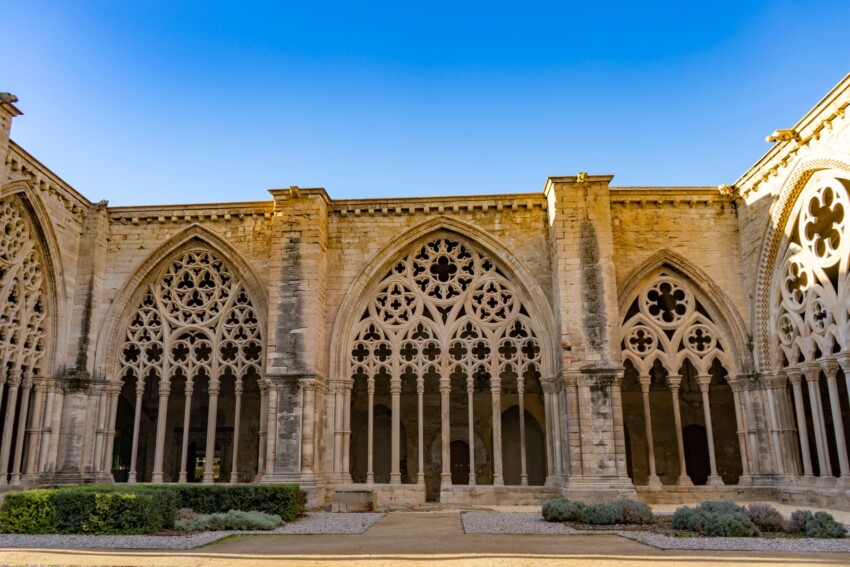
The Seu Vella or Old Cathedral forms together with the King’s Castle (or Suda), military fortifications and various archaeological remains an important historical site. The Seu Vella is the ancient cathedral of Lleida and has been described as one of the best artistic productions of 13th century Catalan architecture.
The church was designed by Pere de Coma and boasts a Latin cross plan with three naves and a transept opening into five apses. The main façade is Romanesque in style, has three doors and connects with the cloister. The door of the nave, or Main Portal, was built following the model of the so-called Lleida School, without a tympanum but with archivolts.
In the south-west corner of the cloister stands the octagonal tower built between the 14th and 15th centuries. With a height of almost sixty metres, the tower is one of the tallest buildings in the city. Equipped with a spiral staircase of 238 steps, climbing to the top of the tower is the perfect opportunity to admire a beautiful panorama.
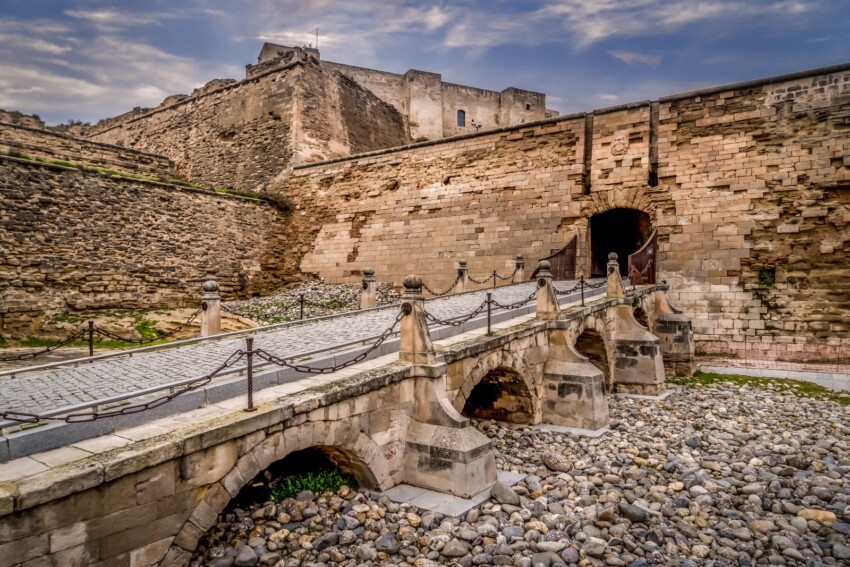
A few metres from the cathedral are still the ruins of the ancient city walls, which once surrounded the city, and some remains of the Suda, a complex that means ‘enclosed urban area’ in Arabic. In fact, there had been an Arab fortress here since the 9th century, which was later destroyed to make way for the King’s Castle, which was the residence of the ruler and the centre of political decision-making.
The construction of the fortress took place between the 13th and 14th centuries, which is why Romanesque and Gothic forms coexist in the building. Added to this is the fact that over the years, different rulers have added or modified parts of the complex according to their own taste and different needs.
The castle is a building with a rectangular floor plan consisting of four bodies built around a central courtyard with a cistern. Unfortunately, the building was partly destroyed during the War of Independence and then underwent several alterations that changed its original appearance. Today, only a small part of the complex can be visited.
The Roman town of Llerda and the Muslim town of Larida were already fortified villages at the time, with a centre built on top of the hill and walls that extended as far as the Segre River. It is still possible to admire a small section of the Roman wall that has been preserved and has come down to us, and which is located a few metres from the Lion Gate.
The structure of the fortified town was also maintained during the Middle Ages when it was enlarged. During the second half of the 15th century in the context of the civil war against John II, Lleida’s defence system suffered severe damage, which then led to the structure being restructured and expanded. The fortified area around the hill boasts defensive bastions, walls, walkways and tunnels and is the result of numerous interventions over the different eras.
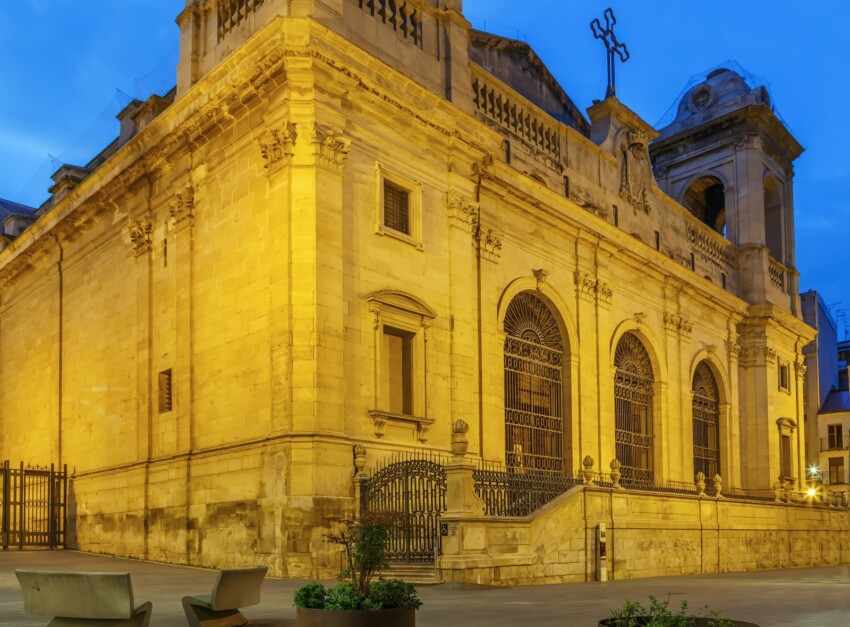
The current cathedral of Lleida, known as the New Cathedral, was built between 1761 and 1781, thanks to contributions from the people of Lleida, King Charles III and Bishop Joaquín Sánchez. The religious building is in the Baroque style combined with tendencies of French academic classicism. The design of the church was created by the Spanish architect Pedro Martín Cermeño while the Italian Francesco Sabatini, who lived at the Spanish court, directed the work.
The Cathedral has three naves with half-barrel vaults supported by pillars, Corinthian columns and buttresses between the side chapels. Externally, the façade is characterised by the presence of a staircase and three doors that are placed under pointed arches and are framed by neoclassical elements, capitals and friezes. On the side of the façade, there are also two bell-towers.
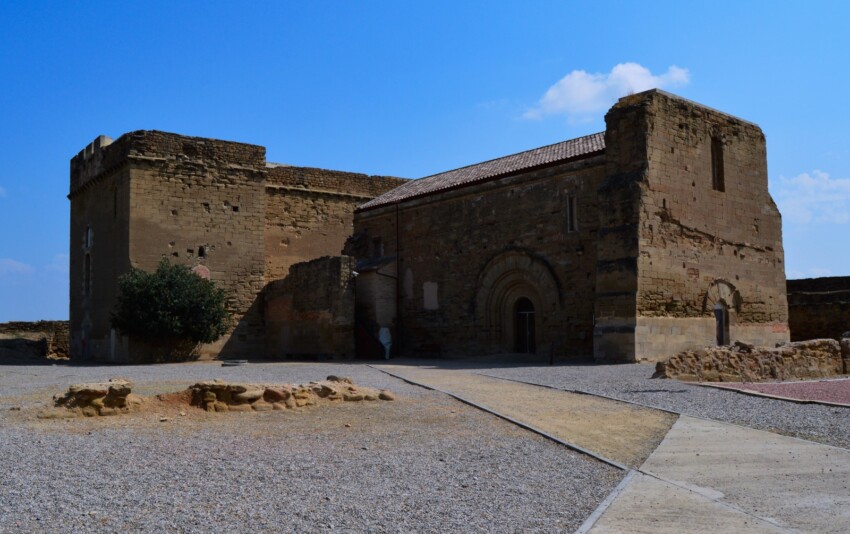
In 1149, the crown decided to donate various goods to the Templars in gratitude for their help during the war against the Arabs. Among the gifts was the territory of Gardeny Hill on which the Order of the Temple (a monastic-military order) built a convent complex.
The monumental complex of Gardeny is one of the most important examples of temple architecture in 12th century Catalonia. The site consists of three main structures, erected in the mid 12th century, although major alterations were made between the 17th and 18th centuries that altered the original appearance.
The heart of the site was the two-storey tower-residence, or Maschio, which housed a warehouse on the lower floor and the Order’s monks’ dwellings on the upper floor. Various outbuildings were gradually built around this.
Another important building in the complex is the Church of Santa Maria built around the middle of the 12th century in Romanesque style. The religious building has a rectangular nave, barrel vaults and a polygonal apse.
Paeria Palace was built in the early 13th century by the Lords of Sanaüja, who donated it to the city in 1383 so that it could become the seat of government. The building is one of the most significant examples of Gothic civil architecture in Catalonia and is built around a central courtyard.
It is a square-plan building with a double façade: one faces Paeria Square and is in civil Romanesque style, the other is neoclassical and faces the Segre River. The Palace, which underwent several renovations in the 20th century, conserves a 15th-century Gothic altarpiece and the Municipal Historical Archive. It is in this Archive that the People’s Charter, an early constitution of the city dating back to the 12th century, is kept.
Considered the second most important church in the city after the Seu Vella, the Church of San Lorenzo dates back to the end of the 12th century. Also built by Pere de Coma, the religious building now has three naves with three apses. The central nave, in Romanesque style, is the oldest, while the side naves were added later and are Gothic, as are the chapels and the octagonal-based bell tower. Inside, the building contains four important Gothic altarpieces and a 15th-century Gothic painting.
The Museu de Lleida covers an area of more than 7,000 square metres and provides an insight into the history of this area. The tour inside it starts in prehistory and reaches up to the contemporary age, touching on all the successive dominations.
The museum houses collections from different sites such as the Diocesan Museum, the Museum of Antiquities and the Numismatic Office. It contains not only very old objects and artefacts but also altar frontals from the Romanesque period, Flemish tapestries and Gothic paintings.
The Water Cistern is the first drinking water reservoir in the city of Lleida and was built at the end of the 18th century. It is a large building supported by 25 stone pillars and covered by six barrel vaults. It could hold up to 9 million litres of water and is therefore known as the ‘Cathedral of Water’.
The water came here from the Pinyana canal and was then distributed throughout the city through five monumental fountains: the Ensenyança, the Roser, the Cathedral, the Sant Francisco and the Sant Joan, which is better known as the Fountain of the Sirens.
In the following map you can see the location of the main places of interest mentioned in this article.
Despite its small size, Lleida still offers a wide range of accommodation. Most of the accommodations are newly built or have been recently renovated. Given the structure of the city, it is advisable to stay in the area around the historic centre to have sites of interest, shops and restaurants close at hand.
Lleida is a town that can be easily reached by car or even by public transport.
Those travelling by hire car can reach the city via the AP-2 motorway, which connects Lleida with the cities of Barcelona and Zaragoza. Those coming from Osca, on the other hand, can take the Lleida-Osca A-22 motorway. From France it is possible to reach Lleida via the N-230, which runs through the Vall d’Aran and the Vall de Boí, while from Andorra one can travel along the C-14.
Those who want to reach the city by train can use the Renfe lines or those of the Ferrocarrils de la Generalitat de Catalunya that connect Lleida to many places in Catalonia. Less than 20 km from the city is also Lleida-Alguaire Airport.
What's the weather at Lleida? Below are the temperatures and the weather forecast at Lleida for the next few days.